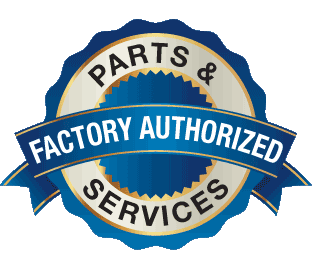
Why you should have your HVAC ducts cleaned regularly to prevent mold
There are many types of mold that can impact your home’s air quality. Most types of mold are found in damp, dark areas, where the temperature stays around 60 to 80 degrees. But mold and mildew can show up anywhere moisture appears in your home. Not all types of mold are dangerous, but some are—particularly black mold.
When mold is present, your home’s heating and air conditioning system can spread it to every room. To ensure you and your family are safe, regular inspections of your heating and cooling system can prevent whole-home contamination. This is why regular cleaning appointments are critical to the health and safety of your family.
Common types of mold found in homes
There are several types of mold that commonly grow in an HVAC system. Spotting and identifying these molds during annual HVAC inspections can prevent disasters later and keep your indoor air quality pure.
- Acremonium commonly appears in humidifiers, coils, windows and drain pans. It varies in color from a pinkish hue to orange. In some cases, it may be white. This type of mold can harm the immune system and even can get into a person’s bone marrow. Some organs like the brain can be adversely affected and can develop into cancer.
- Alternaria causes allergies and can be toxic. Its appearance is dark green to brown. Once in the lungs, asthma symptoms can develop, along with lower respiratory problems. Alternaria is commonly found below leaky roofs or in any area where water settles for an extended period of time.
- Aspergillus forms into spores that can cause asthma symptoms and other respiratory concerns. The colors may vary.
- Aureobasidium is another type of dangerous mold that causes respiratory problems. Commonly found in the walls or floorboards of a home, it’s difficult to spot early. Because it’s often the same brown color as most woods, it’s tricky to identify.
- Chaetomium comes from water damage that begins as a cotton-type of substance, then it turns black. This is easily identified because it smells musty. It’s typically found in your pipes, but can be found elsewhere as well.
- Fusarium is similar to cladosporium but more dangerous. It grows in both warm and cold conditions. It’s typically a pink color.
- Cladosporium causes allergens. It typically grows in warm conditions where water has sat for some time. It has an odd suede texture, and can cause health problems in the lungs and in the eyes. Skin rashes are common in advanced exposure.
- Mucor grows in thick patches that look like fuzz, and it’s a common mold found in HVAC systems. The wet conditions from condensation create a rapid growth of this toxic mold, which can cause flu-like symptoms.
- Stachybotrys is the famous black mold that many people hear about. It’s a distinct dark green to black color, and has a slimy texture. Long-term exposure causes all the same concerns as the other types of mold listed, but this one is also known to cause depression. Neurological issues can develop in children, and can even lead to cancer.
- Trichoderma grows in layers. It’s difficult to spot at first, until it grows into the system itself to cause a need for replacement. As with all these types of molds, a good dehumidifier can help prevent growth.
- Ulocladium is black and mimics black mold. Skin conditions can develop when exposed to ulocladium for a long period of time, and asthma and upper respiratory system symptoms also appear. If you see black mold, it’s always best to call in a professional to ensure that you and your family remain safe.
Mold can cause chronic health conditions
Mold is a type of fungi composed of filaments that interweave to produce mycelium, which gives off airborne spores. Since they become airborne pathogens, they can grow inside the body, once inhaled. Exposure to some types of mold can cause serious and chronic health conditions, including:
- Chronic obstructive pulmonary disease (COPD)
- Respiratory diseases
- Pulmonary fibrosis
- Cancer
- Neurotoxicity
These and other conditions that stem from exposure to mold are easily prevented with regular inspections of your HVAC system.
Mold inspections play an important role in home health
According to the U.S. Environmental Protection Agency (EPA), routine inspections for mold in the sheet metal, components and ducts of the home ensure that your heating and cooling system blows air that is safe for your family.
Professional inspections include locating the mold, and areas that are prone to mold, to get rid of the existing problems. Then, technicians will create an environment that prevents this hazard from happening in the future.
Whole-home dehumidifiers can be a useful tool in the Houston, Texas area for preventing mold growth. Because it can grow in those ducts and other areas of the AC system, a whole-home dehumidifier can prevent the growth of mold.
Leaks and faulty HVAC systems can create places like this for mold to develop. Installing a dehumidifier allows the high humidity of Houston and the surrounding areas to be a controlled part of the home. That way mold never begins to grow in your HVAC system.
 Read reviews
Read reviews








